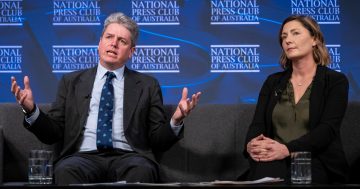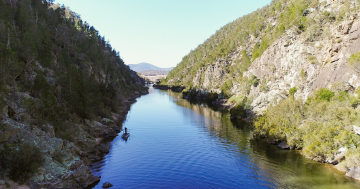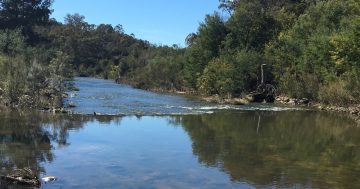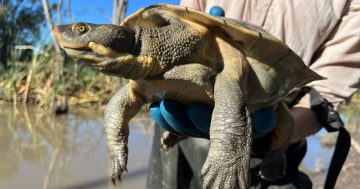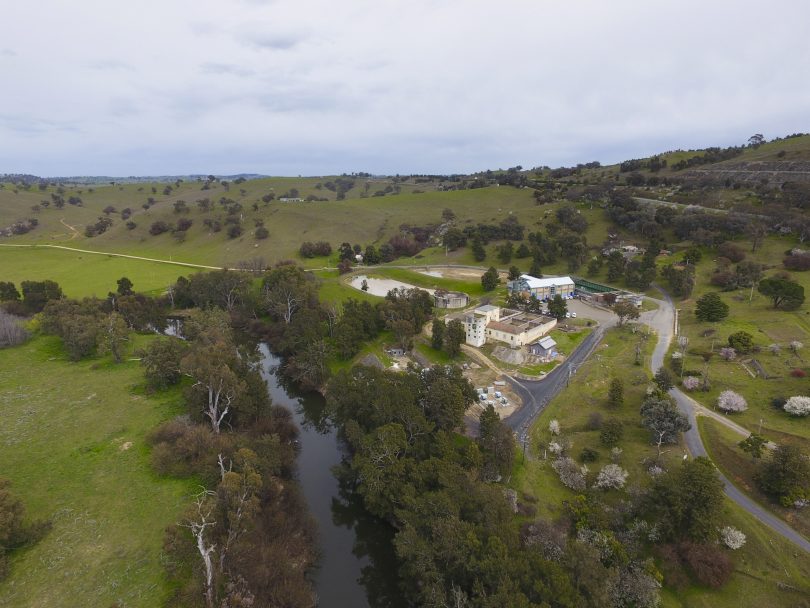
An aerial view of the Jugiong pumping station. Photo: Goldenfields Water.
One of the most ecologically damaged rivers in the Murray Darling Basin (MDB), the Murrumbidgee River, will be drawn on again to provide water security for Boorowa, north-west of Canberra.
At a time when population growth and climate change are expected to put more pressure on rivers, a scoping study is investigating a new bulk water supply pipeline on the river, downstream from Burrinjuck Dam at Jugiong. A pumping station at Jugiong already provides water for towns in the south-west of NSW at Temora, Young, Cootamundra and Harden-Murrumburrah and the village of Wallendbeen.
Goldenfields Water County Council draws its water from the Murrumbidgee and eight groundwater resources, which is then treated and transported across 2,100km to constituent council areas. One of them, Hilltops Council, is doing the scoping study with the help of money from the NSW Government, for the Jugiong-Boorowa pipeline.
Goldenfields Water County Council declined an interview, but in a subsequent press release said water allocations remained at full capacity and no water restrictions were necessary across its distribution area. Given the lack of rainfall, it would continue regular monitoring and review.
Professor Jamie Pittock from the ANU’s Fenner School of Environment and Society said a Murray Darling Basin Authority sustainable rivers audit carried out up until 2009 rated the Murrumbidgee as among the worst of the rivers for diminished native fish populations and numerous feral pests.
“The river is critical for supplying water to major wetlands, the flood plain forests in the mid-Murrumbidgee region between Narrandera and Darlington Point haven’t been getting a sufficient drink for quite some time,” Dr Pittock, a member of the Wentworth Group of Concerned Scientists, said. “The Murrumbidgee is important for providing water that is needed further down river to water further major wetlands. The health of the river is a major concern.”
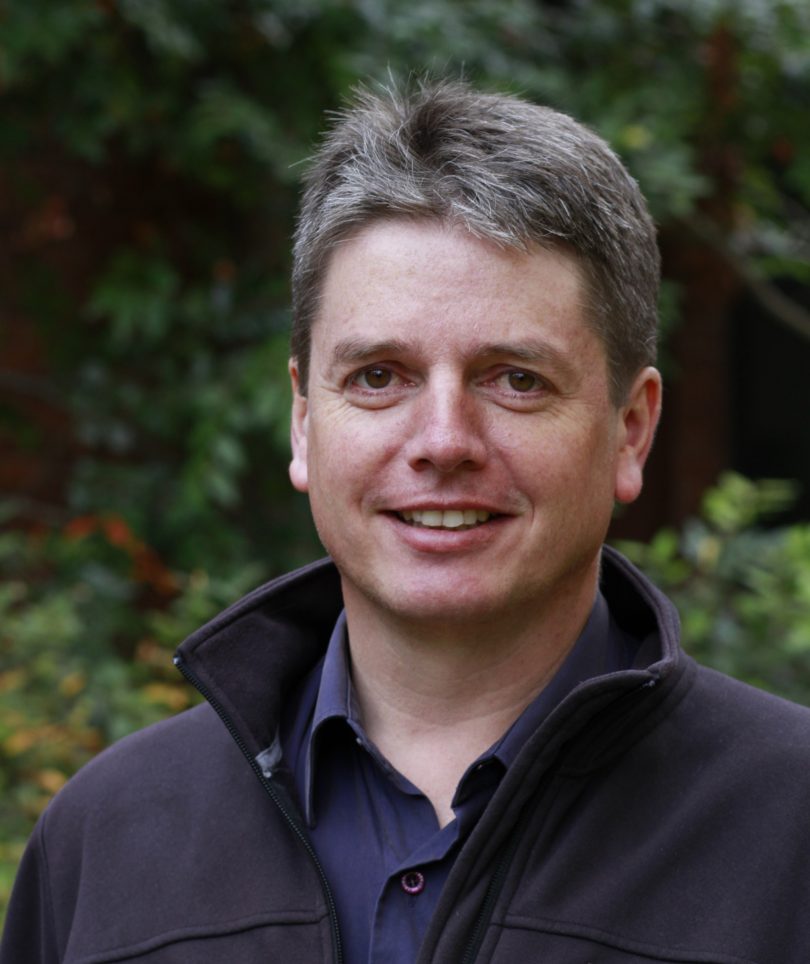
Professor Jamie Pittock, a member of the Wentworth Group of Concerned Scientists. Photo: Supplied.
A 90-minute drive from Canberra, Boorowa’s population of about 1,600 people is growing through retirees and tree-changers from the ACT and Sydney. Dr Pittock says the MDB catchment needs healthy communities to help manage rivers and landscapes sustainably.Under the MDB Agreement, the amount of water that can be extracted for consumptive purposes, including domestic and agriculture, is capped, but there is a trade in water resources. Dr Pittock said if a town like Boorowa needed more water, they could buy a water entitlement on the water market. “The [Jugiong-Boorowa] bulk water supply line of itself is not a major problem provided the proponents supply water with entitlements purchased within the Sustainable Diversion Limit,” he said.
Dr Pittock says water trading has been successful in providing jobs and growth of industries, but not for the environment. He believes unused and little-used water entitlements should have been recovered for the environment. He said the Water NSW’s Surface Plan for the Murrumbidgee (now on public display) was an opportunity for further reforms.
In particular, constraints needed to be removed to allow minor managed floods to be released from the upriver dams, to fill the river channel and wet the lower floodplain.
“This means strengthening levee banks and bridges, and compensating landholders through buying flood easements,” Dr Pittock said. “This will be of great benefit by reducing the impacts on unmanaged floods; watering pastures on the lower floodplains; and improving infrastructure. Without managed watering, the floodplain forests and other wetlands will die.”
Dr Pittock says the drought is looking particularly severe, consistent with worsening droughts expected with climate change.
“The modelling, the projections that have been done on the likely impacts of climate change, would suggest water resources in our region are likely to diminish over time. That is of great concern to all of us who live here, [whether] people are concerned about the environment, about drinking water for towns or about agriculture.”













